Introduction of how to propagate Gardenia jasminoides
Introduction of how to propagate Gardenia jasminoides
Gardenia can be propagated mainly by cutting and pressing, and can also be propagated by sowing and dividing plants, or by rooting with water.
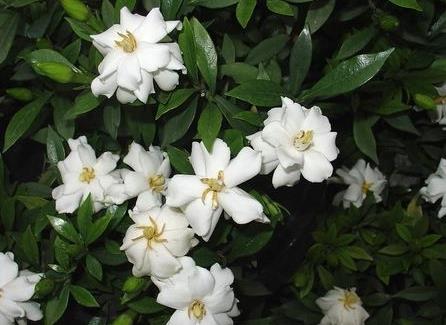
1. Cuttage propagation
The north is in the greenhouse from October to November, and the south can be inserted from April to the Beginning of Autumn at any time, but the survival rate is the highest between summer and autumn. Cuttings choose healthy 2-year-old branches with a length of 10-12 cm, cut off the lower leaves, cut the lower end into a 45-degree angle, tie them into small bundles every 20 to 30, soak the slant in 0.05% rooting powder solution or 0.05% naphthalene acetic acid solution for 15 seconds, take out the drying solution and insert it into the sand. According to the row spacing 20~25cm, plant spacing 7~8cm, insert the cuttings bevel into the soil. Compacted and watered, set up a low shade shed for shade.
It can take root in about 15 days under the condition of 80% relative humidity and the temperature of 20-24 ℃. It is better to soak in indole butyric acid of-6 power of 20-10 to-6 power of 50-10 for 24 hours. When the rooting seedlings begin to grow, they can be transplanted or put on the pot for a single plant, and can blossom after 2 years. The north can also be propagated by water insertion, that is, the base of the cuttings is soaked in clean water, the water is changed once a day, and the water holder can grow new roots in a semi-shaded place for about 20 days. Weeding and topdressing should be strengthened (see seed breeding). After 1-2 years of cultivation, it can be transplanted when the seedling height is 40~50cm. This method can not only obtain a large number of seedlings, but also blossom and bear fruit earlier, and maintain the good characters of the female parent.
2. Striping propagation
In April, strong branches were selected from 3-year-old mother plants, which were 25 to 30 meters long for striping. If there were trigeminal branches, three seedlings could be obtained at the fork at one time. Generally, it can take root after 20-30 days, can be separated from the mother plant in June, and can be planted separately or single plant in the next spring.
3. Sowing and reproduction
Most of them are carried out in spring, and the seeds germinate slowly, germinate about 1 year after sowing and blossom after 3-4 years, but it is not easy to receive seeds in the northern pot.
1) seed selection: select plump, crimson ripe fruits, dried or dried in shells. Before sowing, cut the pericarp of the seeds with scissors, dig out the seeds, rub them in hot water, remove floating seeds or impurities, then fish out the sunken full seeds, spread them on the bamboo mat, put them in a ventilated place to dry too much moisture, and then sow the seeds.
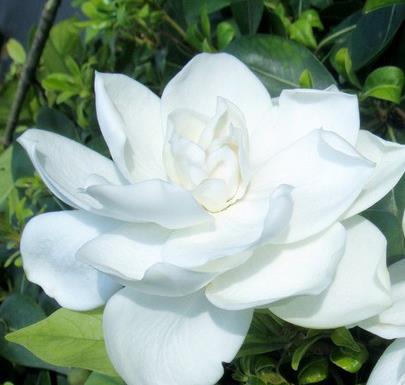
2) Land selection and preparation: select the deep, loose and fertile sandy loam, plough 1-1.5 feet, start the border according to the width of 4-5 feet, the border height is 6 inches, apply 20-30 piculs of human feces per mu, wait for the soil to dry, shallow rake mud blocks, flatten the border surface. Sowing ditch is opened according to 6-7 inch row spacing on the border surface, and the ditch depth is about 1 inch to be sown.
3) sowing seedlings: spring sowing or autumn sowing, spring sowing before and after Rain Water, autumn sowing before and after the Autumn Equinox, sowing seeds mixed with fire ash evenly in the sowing ditch, and then covering the sowing ditch with fine soil or fiery soil, covering the grass with water, often keep the soil moist, in order to facilitate seedling emergence, 4-6 jin of seeds per mu.
Seedling management: after sowing, often watering to keep the border moist, about 20 days after emergence, remove the cover grass from the border, and then strengthen the management. When the seedlings grow 2-3 true leaves, the seedlings are thinned, the seedlings are too dense and weak, and when the seedlings grow 5 true leaves, the seedlings are kept according to the seedling distance 5~8cm, and frequently ploughed and weeded to maintain the growth of weeds in the seedling land. At the same time, proper topdressing should be carried out in the first year, once in spring, summer and autumn in the second year, and once in spring, summer, autumn and winter in spring, summer, autumn and winter. Combined with ploughing and weeding, 1000~1500kg was applied to human and animal manure every time per mu. From autumn sowing to the end of autumn and early winter in the second year, the seedlings can be planted when the seedling height is above 30cm, and the seedlings sown in spring can be planted when the seedlings reach 30cm in the next spring. If they do not reach the 30cm height, they will continue to be cultivated until the end of autumn and the beginning of winter. A large number of seedlings can be obtained by this method.
4) many seedlings often grow around the rhizosphere of Gardenia jasminoides. Every year in early spring or late autumn and early winter, the strong-growing plants are selected, the topsoil around them are planed, and the seedlings are cut off from the mother roots with a knife to be planted as seedlings.
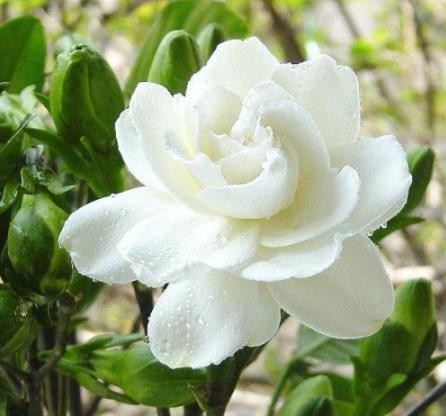
4. Water inserting and rooting
The annual branches with a length of 10 to 12 meters and 2 leaves were taken. Cut the tip of the branch into a horseear and soak it in 0.1% potassium permanganate solution for 4 hours, then take it out and insert it into clean water. The length of the cuttings is the total length of the cuttings. The brown bottle is used as a container to change the water every 1 to 2 days. The cuttings can also be drilled in the wood or foam board to insert the cuttings into the holes and then float on the water.
After the new root is grown, it can be transplanted to pot or ground when it is moved from dark to bright, when the root length reaches 1.5-2 cm, and the number of roots per plant is 6-7.
Matters needing attention in insertion and propagation of gardenia jasminoides
1. Gardenia jasminoides prepared in basin soil is suitable to grow in the soil with loose and deep, good aeration and water retention and pH value from 5.5 to 6.5. Disinfect the soil before insertion, spray the soil with 50% carbendazim wettable powder 0.125% solution, and then cover the soil with plastic film for three or four days. After removing the film for a week, it can be used after the medicine gas is volatilized. The acidity of conifer humus soil in the south can also be disinfected with lime powder.
two。 Select cuttings from young and middle-aged trees with fragrant flowers and large flowers, the 2012 branches with strong growth, full Lignification and no diseases and insect pests were selected as cuttings. This kind of branches are not only easy to survive, but also grow into plants of good quality.
3. The treated cuttings cut the branches into cuttings 10 to 15 meters long, leaving only the upper three or four leaves to reduce transpiration intensity. The upper cut of the cutter is cut into a flat cut and the lower cut is cut into an oblique notch to increase its contact surface with the soil and facilitate the absorption of water. The upper incision is one or two centimeters away from the bud, and the lower incision is 0.5 centimeters away from the bud. The incision should be smooth to prevent splitting.
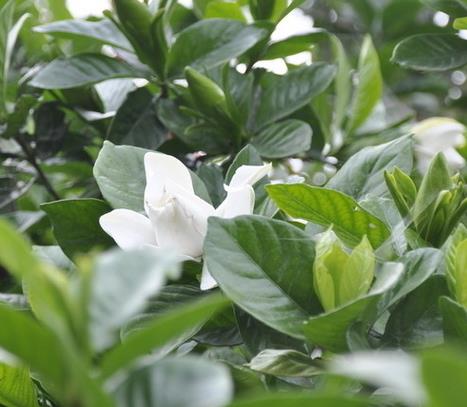
4. The cuttings are inserted into the potted soil in the morning or evening at a depth of 2 to 3 of the length of the cuttings, compacted with the soil by hand and watered once to facilitate the close combination of the cuttings with the soil. In order to prevent cuttings from losing water, cuttings should be cut as they are cut.
5. After insertion, the management sets up the plastic shed and covers the sunshade net. The plastic shed can adjust the temperature and humidity of the soil and air, and the sunshade net can prevent direct sunlight and reduce the temperature. The key to the survival rate of gardenia is to control the temperature and humidity of soil and air in order to provide the best growth conditions. The best environmental conditions for rooting are as follows: the ground temperature is 20 ℃ to 25 ℃, the air relative humidity is 80% to 90%, and the soil moisture is about 80% of the field capacity. In the early stage of planting, it is usually watered once every 10 days. After drawing and spreading leaves, water it once every 3 to 7 days. Thirty or forty days after cuttage, cuttings can take root, and 0.25% to 0.5% urea liquid fertilizer and 0.2% potassium dihydrogen phosphate liquid fertilizer can be sprayed in turn to promote rooting. Six months after insertion, the ventilation and light time should be properly prolonged to improve the ability of the seedlings to adapt to the external environment. The following spring, transportable seedlings were planted.
Matters needing attention in the propagation of gardenia in the south
In the south of the Yangtze River, twigs can be used in the rainy season. From late May to mid-June, the full growth, sturdy growth and semi-mature twigs with an interannual old branch were selected as cuttings. Cuttings are too young and easy to rot, and if they are too old, they will take root slowly. Use fast scissors to cut the branches 1 cm below the bottom of the selected branches (because it is easy to grow fibrous roots under the nodes), and cut the branches into 10 Mel 15 cm long, each cuttings must have at least 3 Mel and 4 buds. In the lower part, the leaves were cut off at 3 parts, and 4 leaves were retained in the upper part to assimilate and promote the rooting of cuttings. In order to reduce evaporation and facilitate survival, each leaf retained can be cut in half. The depth of the cuttings is 1 / 3 of the length of the cuttings, and the soil should be loose in a tower basin or open-field nursery bed. After insertion, pour enough water with a spray can to keep the soil moist and should not be too wet. In order to prevent direct sunlight, you can build scaffolding, shade with curtains, and lift the morning cover at night. Cuttings can take root after about 1 month, and 10% light rotten human feces and urine or cake fertilizer and water can be applied every half month. About 3 months later, the basin was transplanted on a cloudy day.
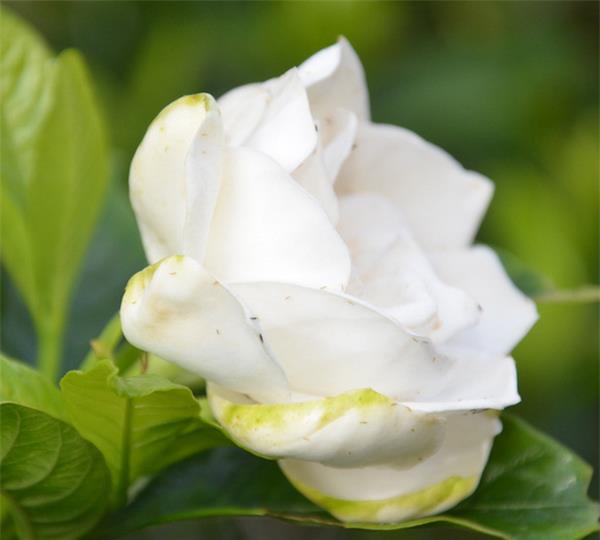
The strip pressing method is also simple and effective. During the Meiyu season, choose the strong branches of the 3-year-old mother plant to pull down the ground, peel off some bark on the ground, and then cover it with fine soil 20 feet thick. After a month, it can take root. It can be separated from the mother plant at the end of June and can be planted in the following spring.
Gardenia can also be sown and propagated, which is mostly used in production. There are two kinds of sowing: spring sowing and autumn sowing. Spring sowing is better during the period from the Beginning of Spring to Rain Water. Using pot sowing, it can sprout after a year and blossom after three or four years. Seeds are rarely received in the north, so the sowing method is not used.
This kind of branches are not only easy to survive, but also grow into plants of good quality.
3. The treated cuttings cut the branches into cuttings 10 to 15 meters long, leaving only the upper three or four leaves to reduce transpiration intensity. The upper cut of the cutter is cut into a flat cut and the lower cut is cut into an oblique notch to increase its contact surface with the soil and facilitate the absorption of water. The upper incision is one or two centimeters away from the bud, and the lower incision is 0.5 centimeters away from the bud. The incision should be smooth to prevent splitting.

4. The cuttings are inserted into the potted soil in the morning or evening at a depth of 2 to 3 of the length of the cuttings, compacted with the soil by hand and watered once to facilitate the close combination of the cuttings with the soil. In order to prevent cuttings from losing water, cuttings should be cut as they are cut.
5. After insertion, the management sets up the plastic shed and covers the sunshade net. The plastic shed can adjust the temperature and humidity of the soil and air, and the sunshade net can prevent direct sunlight and reduce the temperature. The key to the survival rate of gardenia is to control the temperature and humidity of soil and air in order to provide the best growth conditions. The best environmental conditions for rooting are as follows: the ground temperature is 20 ℃ to 25 ℃, the air relative humidity is 80% to 90%, and the soil moisture is about 80% of the field capacity. In the early stage of planting, it is usually watered once every 10 days. After drawing and spreading leaves, water it once every 3 to 7 days. Thirty or forty days after cuttage, cuttings can take root, and 0.25% to 0.5% urea liquid fertilizer and 0.2% potassium dihydrogen phosphate liquid fertilizer can be sprayed in turn to promote rooting. Six months after insertion, the ventilation and light time should be properly prolonged to improve the ability of the seedlings to adapt to the external environment. The following spring, transportable seedlings were planted.
Matters needing attention in the propagation of gardenia in the south
In the south of the Yangtze River, twigs can be used in the rainy season. From late May to mid-June, the full growth, sturdy growth and semi-mature twigs with an interannual old branch were selected as cuttings. Cuttings are too young and easy to rot, and if they are too old, they will take root slowly. Use fast scissors to cut the branches 1 cm below the bottom of the selected branches (because it is easy to grow fibrous roots under the nodes), and cut the branches into 10 Mel 15 cm long, each cuttings must have at least 3 Mel and 4 buds. In the lower part, the leaves were cut off at 3 parts, and 4 leaves were retained in the upper part to assimilate and promote the rooting of cuttings. In order to reduce evaporation and facilitate survival, each leaf retained can be cut in half. The depth of the cuttings is 1 / 3 of the length of the cuttings, and the soil should be loose in a tower basin or open-field nursery bed. After insertion, pour enough water with a spray can to keep the soil moist and should not be too wet. In order to prevent direct sunlight, you can build scaffolding, shade with curtains, and lift the morning cover at night. Cuttings can take root after about 1 month, and 10% light rotten human feces and urine or cake fertilizer and water can be applied every half month. About 3 months later, the basin was transplanted on a cloudy day.

The strip pressing method is also simple and effective. During the Meiyu season, choose the strong branches of the 3-year-old mother plant to pull down the ground, peel off some bark on the ground, and then cover it with fine soil 20 feet thick. After a month, it can take root. It can be separated from the mother plant at the end of June and can be planted in the following spring.
Gardenia can also be sown and propagated, which is mostly used in production. There are two kinds of sowing: spring sowing and autumn sowing. Spring sowing is better during the period from the Beginning of Spring to Rain Water. Using pot sowing, it can sprout after a year and blossom after three or four years. Seeds are rarely received in the north, so the sowing method is not used.
Related
- Wuhan Hospital Iron Tree Blooming Result Was Instantly Frightened by the Gardener Master
- Which variety of camellia is the most fragrant and best? Which one do you like best?
- What is the small blue coat, the breeding methods and matters needing attention of the succulent plant
- Dormancy time and maintenance management of succulent plants during dormancy
- Minas succulent how to raise, Minas succulent plant pictures
- What are the varieties of winter succulent plants
- How to raise succulent plants in twelve rolls? let's take a look at some experience of breeding twelve rolls.
- Attention should be paid to water control for succulent plants during dormant period (winter and summer)
- Watering experience of twelve rolls of succulent plants
- Techniques for fertilizing succulent plants. An article will let you know how to fertilize succulent plants.



